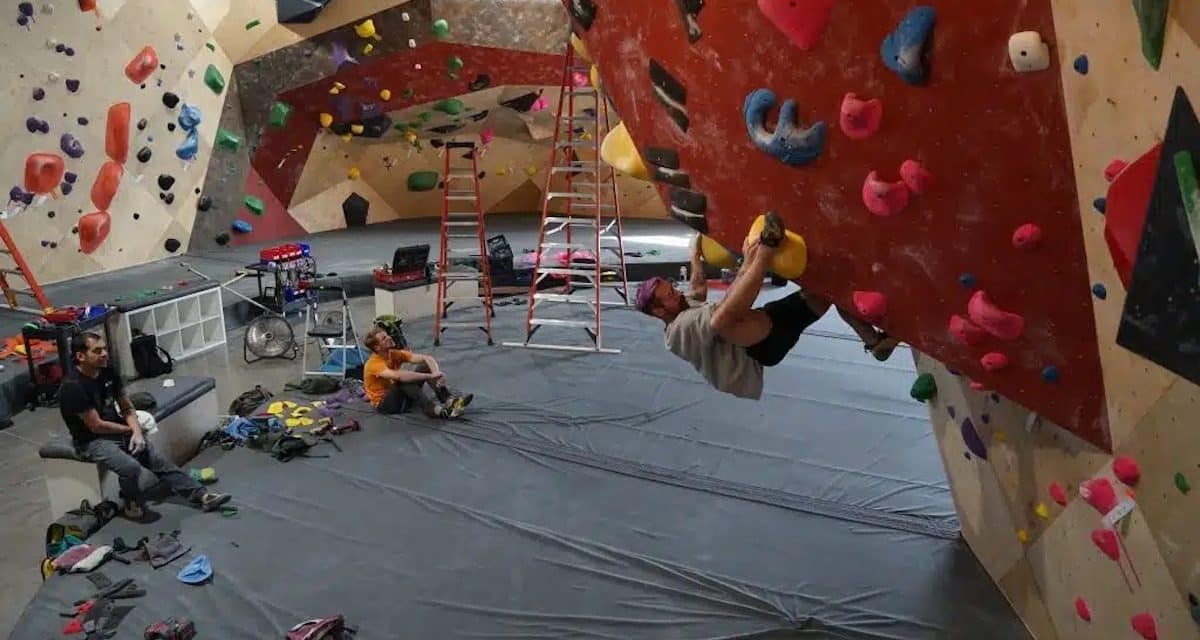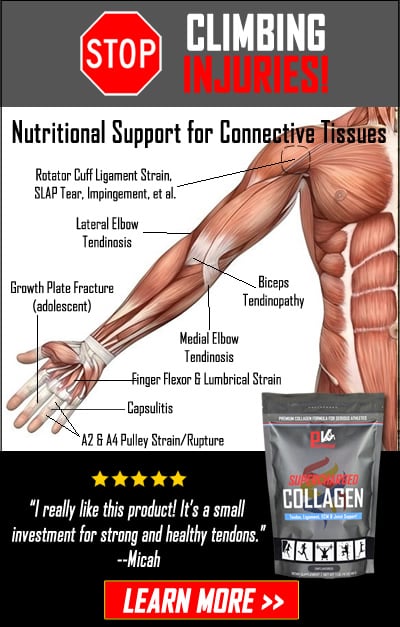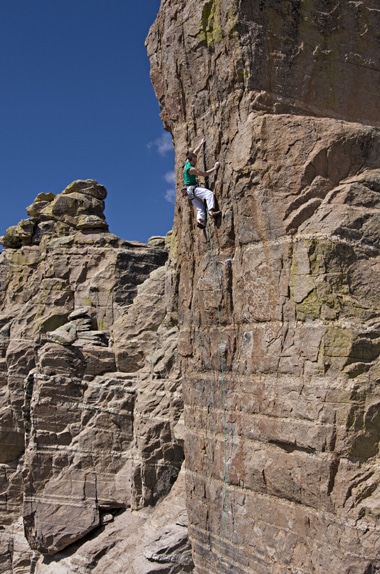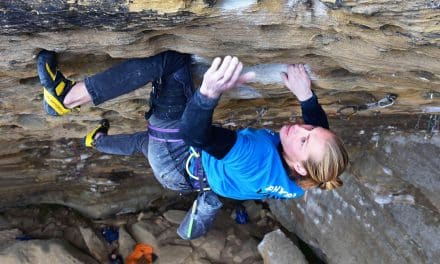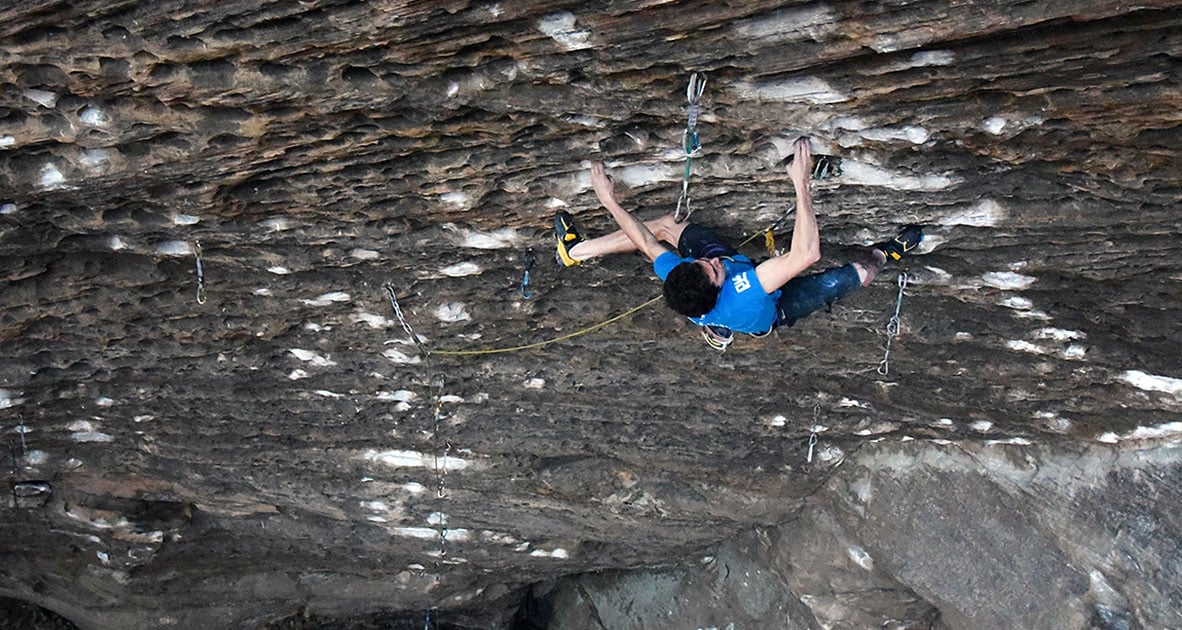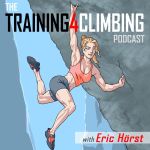Finding the balance between work and life presents more challenges for routesetters than almost anyone else. You can’t just clock in, clock out, and move on with your day if you expect to keep up with personal climbing goals as well. Learn how to make your work as a routesetter, training as a climber, and health—both physical and mental—exist in harmony with one another.
This is the second in a three-part series on self-care for routesetters. Head back to the first segment for an introduction to common pain points among routesetters and tips on strength training and injury prevention, then come back for more on nutritional tactics for helping your body keep up with the daily grind!
Routesetting is more than just a job for most people in the field. It’s a labor of love, and something that stems from a passion for climbing that started long before they ever picked up a drill. But at the end of the day, it’s still work. Not only that, it’s manual labor that leaves a mark. Many routesetters find themselves feeling too drained by the job to give the same attention to their own climbing as they used to. The very thing that they discovered through a love for climbing starts to eat away at their energy and enthusiasm for the sport.
First, the bad news: it’s not possible to “have it all”. Routesetting will inevitably affect your climbing. For better or for worse, humans aren’t machines that can fire on all cylinders at the push of a button.
But as for the good news, a little planning goes a long way in this industry. It is possible to make routesetting work for you more than against you. Try these tips for creating better balance between work, life, and passion as a professional routesetter.
#2: Scheduling, Training, and Resting
Routesetting is still a niche field. It’s gratifying to possess such a unique set of skills that impact entire communities of climbers. But at the same time, it means that routesetting teams are usually pretty small. Setters often work for five days straight (or more) in order to keep up with demand. While that’s not necessarily a problem in other industries, hard manual labor adds up fast.
“Setters can get hurt and exhausted pretty frequently due to how much volume of climbing and hauling movements they have to do,” says Ben Rathbun from Eagle Climbing + Fitness and Monkeyhouse Carbondale. “You can burn out from setting just like any other job, but with the extremely physical nature of it your body can burn out just as quick, or even quicker.”
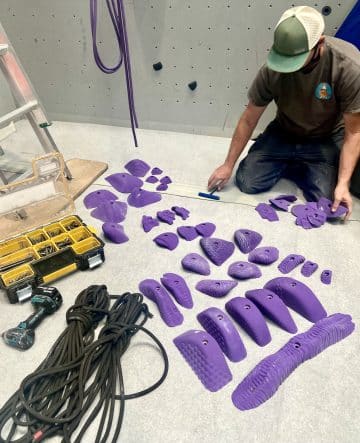
There are plenty of other parts to the job as a routesetter. Some are more mellow and give you a chance to recoup energy.
Periodize Your Routesetting
To manage the load, think of routesetting like a sport in and of itself. Smart climbers know that they can’t climb hard every day of the week. They need rest in between sessions in order to refill the tank and keep showing up at their best. Setting isn’t any different. You can’t expect to produce high quality climbs if you’re at it without reprieve for days on end.
In an ideal world, setters wouldn’t have to hop on the wall more often than any climber would. There are plenty of other tasks behind the scenes of routesetting that matter just as much as the actual setting: hold washing, route planning, gear checks, competition preparation, and more. These parts of the job might not be as glamorous, but building them into each setter’s schedule will drastically lower the wear and tear on their bodies.
The first step is to talk with your setting director about breaking up the workweek with a few days of tasks like these. That way, you can give your body a break with a mixture of hard and easy setting days in the same way that any athlete spreads out their training.
For those in charge of setting teams, take the time to check in with each of your setters and keep tabs on their weekly schedules. Don’t fall into the “more is better” trap. Healthy, energetic setters produce higher quality climbs at a faster rate.
“It’s really important to have a head setter or team leader take all that into consideration,” emphasizes Rathbun from his experience as a setting director. “There needs to be a balance of hard, efficient setting and forerunning days, mixed with easier recovery days doing more basic projects that allow the team to rest.”
Jackie Hueftle, former head setter at The Spot and co-founder of Kilter Grips, agrees. She sees most setters stuck in cycles of injury and fatigue, extending their pain points for years because of an inability to ever fully rest and recover. “But we can do better,” she argues. “Establishing more reasonable schedules and setting expectations around acceptable work conditions can help gyms take better care of their setters.”
Routesetting as Training
No matter your schedule, though, routesetters expend a lot of energy at work. Thomas Shpakow, head setter at Warehouse Climbing Company in Indiana, finds himself “sacrificing quality training sessions for the sake of being a good routesetter”. By the end of the work day, there’s not much gas left in the tank to put toward personal climbing goals.
Kill two birds with one stone by integrating training into your work. It might look a little unconventional, but that’s for the best. Cookie-cutter training plans won’t do you much good anyway because you don’t have a cookie-cutter job.
There are two parts to a day of routesetting: setting and forerunning. Chad Gilbert from Ubergrippen in Colorado suggests thinking of the setting half as active recovery. “It’s like Zone 1 training,” he explains, “a low-intensity effort that gets your heart pumping without going too hard.” Gilbert sees setting as a way to keep the body moving and flush out fatigue from harder efforts.
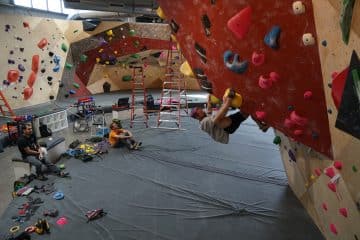
Build as much of your climbing training as a routesetter into the forerunning process as possible. Routesetters test their climbs during a clinic at Contact Climbing.
Forerunning applies even more directly. No, you won’t always have a say in what styles or grades of climbs you’ll be setting each day. But adaptability is just as important as any other skill. Showing up to work each day with an open mind, ready for whatever challenge the day’s climbs present, will keep you on your toes as a climber. You don’t get the choice to avoid your weaknesses; if it’s on the setting schedule, you’re doing it. You’ll build up a broader skill set than most climbers just by nature of the wide range of climbs you’re “forced” to try.
If there are still specific things that you want to train outside of your forerunning sessions, go for quality over quantity. Use forerunning as a warmup so you can dive right into a few sets of intentional, targeted exercises. There’s no time for beating around the bush.
Prioritize Your Personal Goals
Above all, remember that motivated climbers make better setters. Your coworkers, as well as the climbers you’re setting for, benefit from you having your own climbing goals. Climbing well and staying psyched is a key part of the job. Keep your goals fresh in your mind by checking in with them as part of your work day. How can each day on the job benefit you as a climber, not just as a routesetter? Don’t forget to give equal weight to both.
Key Points:
- Burnout is real. Know the risks of working as a routesetter and be prepared to get creative so you can keep doing what you love and loving what you do.
- Think of routesetting as a sport in and of itself. Plan out your week so that you don’t accumulate too much stress without enough rest to balance it out. Working with your team to mix hard and easy setting days can help you reach this balance while still getting the job done.
- Integrate your training into your routesetting. Use setting as a chance to move your body for active recovery from harder efforts, and forerunning as a training session that builds important—but often neglected—skills like adaptability and versatility.
- Motivated climbers make better setters. Put your own climbing goals on the same plane as your work as a routesetter.
Copyright © 2000–2022 Lucie Hanes & Eric J. Hörst | All Rights Reserved.

